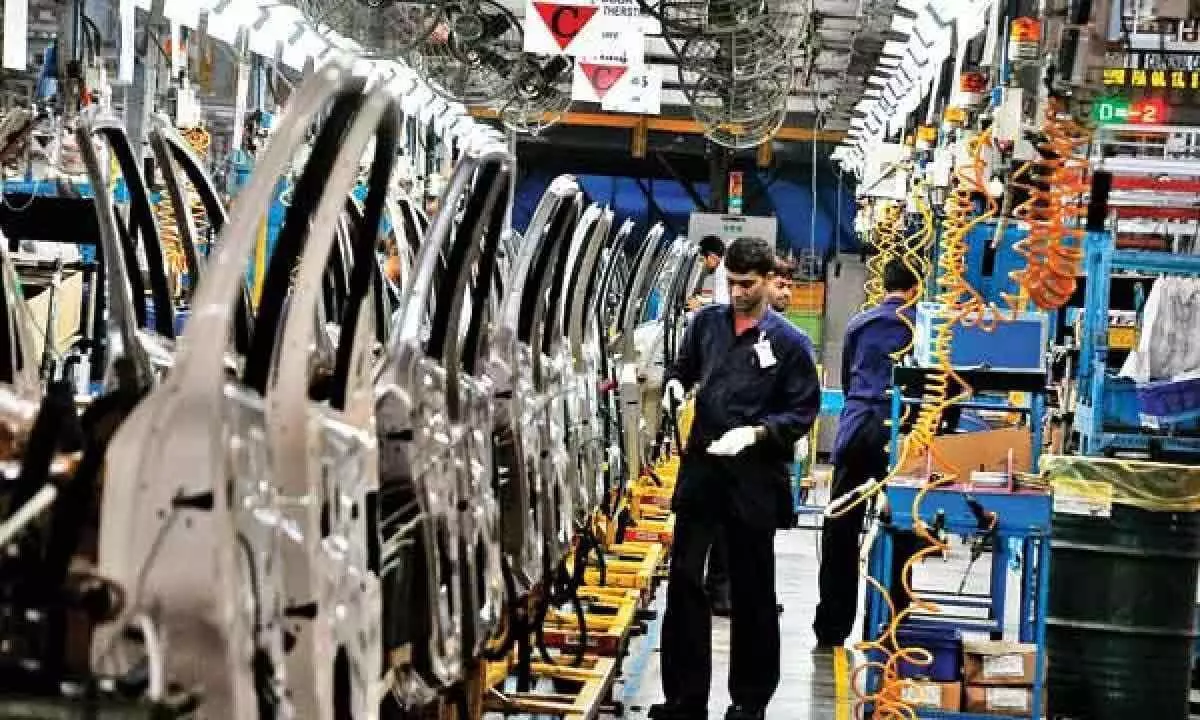IMF to slash India growth, but economy still doing well
Unemployment and rising inflation, however, remain major concerns which, if left unaddressed, may make the decline much steeper and ramifications thereof painful
image for illustrative purpose

After the World Bank scaled down its growth forecast for India GDP forecast for 2022-23 from 8.7 per cent to 8 per cent because of the war in Ukraine, the International Monetary Fund (IMF) is reported to be slashing its India prediction from 9 per cent to 8-8.3 per cent for the current fiscal. The downward revisions, however, do not mean that economic collapse is on the horizon. There are serious problems with our economy, but there is also considerable resilience.
This is the reason that the Asian Development Bank regards India as the fastest-growing major economy which will grow at 7.5 per cent in 2022-23. The bank is unlikely to change its outlook for India.
PTI quoted Hans Timmer, World Bank Chief Economist for the South Asia Region, saying that Russia's war in Ukraine is likely to result in a significant 1.3 per cent lower GDP growth for India and 2.3 percentage point lower income growth.
He said that in the long-term, India needs to really work hard to reduce its dependence on fossil fuel, shift towards renewable energy and increase the participation of women in the workforce, which at present is quite low at 20 per cent.
"On India, the first observation is that we lowered the forecast for the fiscal year that just started seven tenths of a per cent. That is a combination of the negative impact of the war, but also some positive surprises, especially on the export of digital services which were really strong," Timmer said. He also said that India is emerging strongly from the Covid-19 crisis. Among the indicators suggesting rebound, there is the surge in the collection of goods and services tax (GST). The GST mop-up was around Rs1.42 lakh crore in March. The tax-to-GDP ratio is also rising.
The index of industrial production (IIP), while registering an unimpressive growth of just 1.7 per cent in February, is on a slight upswing. Capital goods, however, are not picking up. Exports are also doing well, growing to record $419.65 billion in 2021-22, though there was also a trade deficit of $192.24 billion.
The production-linked incentive (PLI) scheme has taken off, accounting for 13-15 per cent of the average annual investment spending in key industrial sectors over the next three-four years, says a report by the rating agency Crisil. Introduced in March 2020, PLIs are given in 15 sectors, involving a sum of Rs1.93 lakh crore. As much as 50-60 per cent PLIs are for sectors with domestic manufacturing and export focus; others are import localization.
"Implementation of the production-linked incentive (PLI) scheme will lead to a potential capital expenditure (capex) of Rs 2.5-3 lakh crore over the scheme period and will account for 13-15 per cent of average annual investment spending in key industrial sectors over the next 3-4 years," the Crisil report said.
So, while growth may be hit by Russia's invasion of Ukraine, it would not decline steeply. Unemployment and rising inflation, however, remain major concerns which, if left unaddressed, may make the decline much steeper and ramifications thereof painful.

